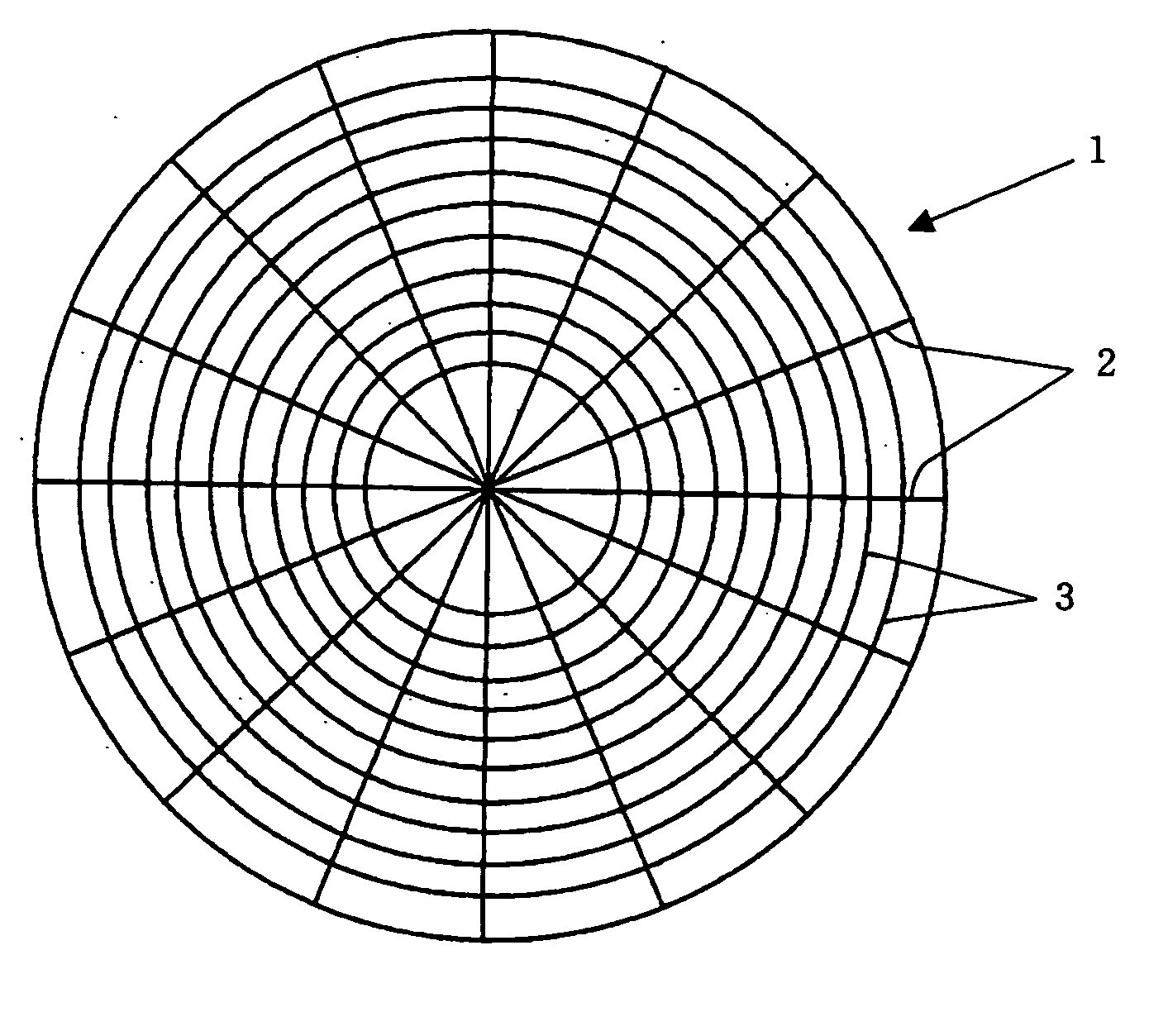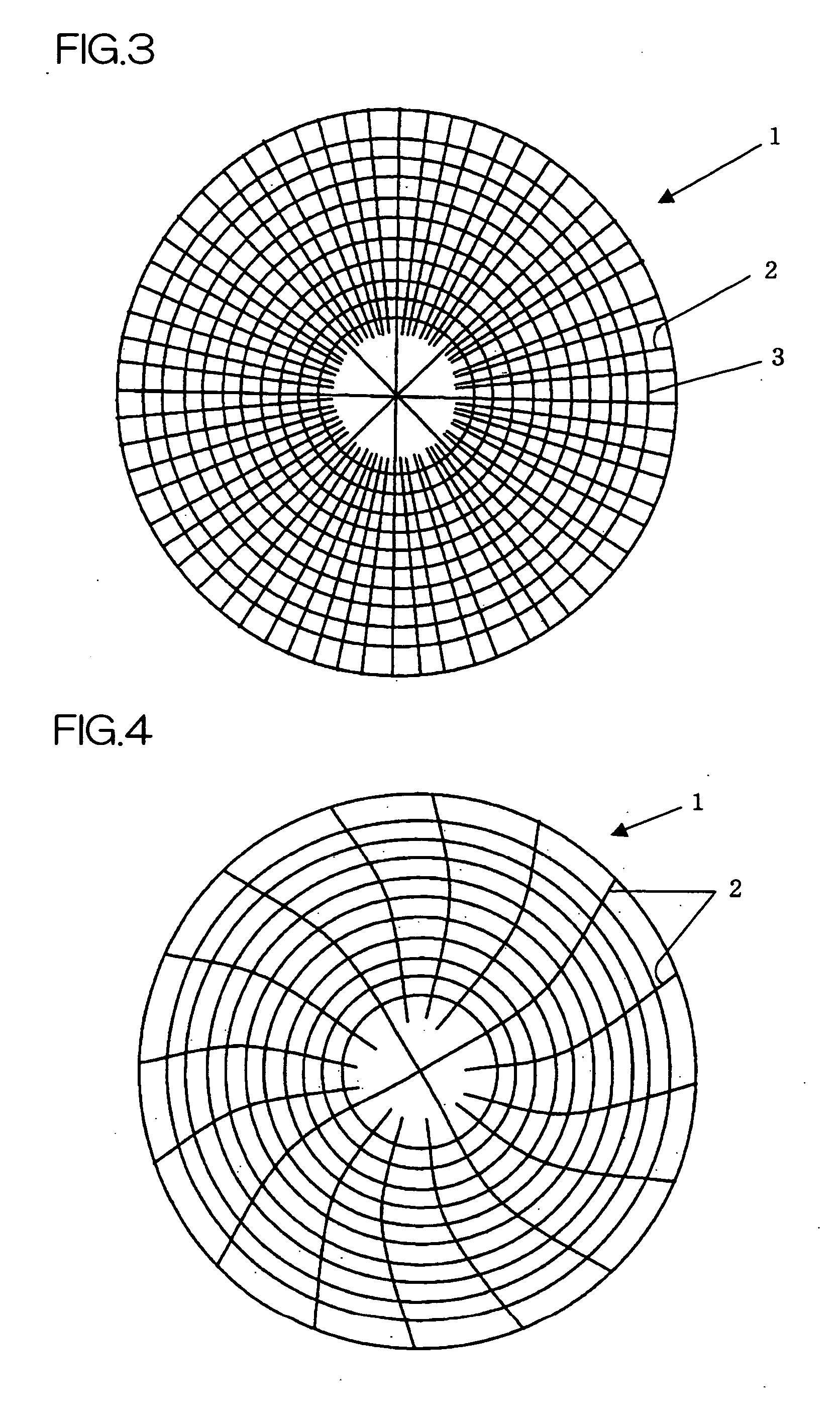Method of manufacturing chemical mechanical polishing pad
a technology of mechanical polishing and manufacturing method, which is applied in the direction of manufacturing tools, flexible wheel parts, grinding devices, etc., can solve the problems of unsatisfactory polishing surface state, greatly affected polishing result, and unsatisfactory polishing rate, so as to achieve excellent polishing rate and suppress the occurrence of scratches.
- Summary
- Abstract
- Description
- Claims
- Application Information
AI Technical Summary
Benefits of technology
Problems solved by technology
Method used
Image
Examples
example 1
(1) Manufacture of Chemical Mechanical Polishing Pad
[0145] 80 parts by volume (equivalent to 72 parts by mass) of 1,2-polybutadiene (manufactured by JSR Corporation, trade name of JSR RB830) and 20 parts by volume (equivalent to 28 parts by mass) of β-cyclodextrin (manufactured by Bio Research Corporation of Yokohama, trade name of Dexy Pearl β-100, average particle diameter of 20 μm) as water-soluble particles were kneaded together by an extruder set at 160° C. 1.0 part by volume (equivalent to 0.44 parts by mass of pure dicumyl peroxide) of Percumyl D40 (trade name, manufactured by NOF Corporation, containing 40 mass % of dicumyl peroxide) as dicumyl peroxide was added to and kneaded with the above kneaded product at 120° C. to obtain a pellet of a composition for forming a chemical mechanical polishing pad. This pellet was fed to the inside of a mold and heated at 170° C. for 18 minutes to be crosslinked so as to obtain a disk-like molded product having a diameter of 600 mm and...
example 2
[0154] 28.2 parts by mass of polytetramethylene glycol having two hydroxyl groups at both terminals of the molecule and a number average molecular weight of 650 (manufactured by Mitsubishi Chemical Co., Ltd., trade name of PTMG650) and 21.7 parts by mass of 4,4′-diphenylmethane diisocyanate (manufactured by Sumika Bayer Urethane Co., Ltd., trade name of Sumidule 44S) were fed to a reactor and maintained at 90° C. for 3 hours under agitation to carry out a reaction, and then cooled to obtain a prepolymer having an isocyanate group at both terminals.
[0155] 14.5 parts by mass of β-cyclodextrin (manufactured by Bio Research Corporation of Yokohama, trade name of Dexy Pearl β-100, average particle diameter of 20 μm) as water-soluble particles was dispersed into 21.6 parts by mass of polypropylene glycol having three hydroxyl groups and a number average molecular weight of 330 (manufactured by NOF Corporation, trade name of Uniol TG300, addition reaction product of glycerin and propylene...
example 3
[0160] After the grooves of the first group were formed in the pad-like form in Example 1, four linear grooves (having a width of 1.0 mm and a depth of 1.0 mm) extending from the center to the peripheral end of the pad were formed as grooves of the second group by a cutting machine equipped with a drive unit capable of angle indexing and positioning in such a manner that they were in contact with one another at the center of the polishing surface of the pad and the angle between adjacent linear grooves was 90°. The four grooves correspond to the four grooves of the second group in contact with one another at the center in FIG. 9. One milling cutter was used to form the four grooves. Further, 28 pairs of linear grooves (the pitch between grooves was 2 mm) extending from points 25 mm away from the center of the pad to the peripheral end of the pad were formed by the same cutting machine as above in such a manner that the angle between adjacent linear grooves was 11.25°. The 28 pairs o...
PUM
| Property | Measurement | Unit |
|---|---|---|
| wedge angle | aaaaa | aaaaa |
| wedge angle | aaaaa | aaaaa |
| radius | aaaaa | aaaaa |
Abstract
Description
Claims
Application Information
 Login to View More
Login to View More - R&D
- Intellectual Property
- Life Sciences
- Materials
- Tech Scout
- Unparalleled Data Quality
- Higher Quality Content
- 60% Fewer Hallucinations
Browse by: Latest US Patents, China's latest patents, Technical Efficacy Thesaurus, Application Domain, Technology Topic, Popular Technical Reports.
© 2025 PatSnap. All rights reserved.Legal|Privacy policy|Modern Slavery Act Transparency Statement|Sitemap|About US| Contact US: help@patsnap.com



